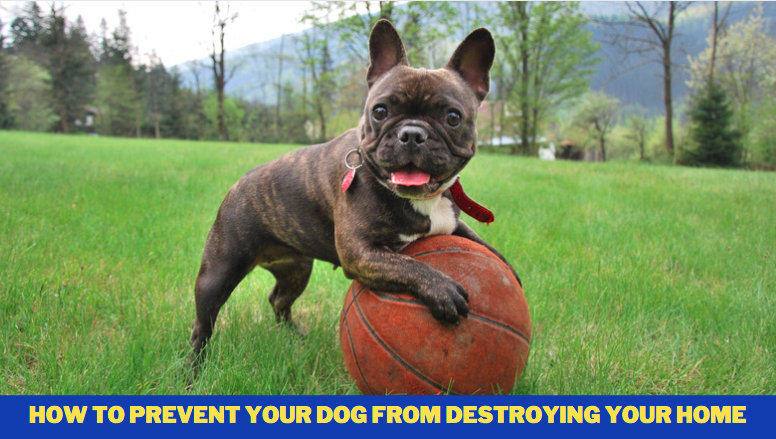How to Prevent Your Dog from Destroying Your Home
The mouths of dogs perform similar functions to those of our hands. It’s the instrument they use most frequently to discover new places. A common way that dogs investigate new things is by biting down on them and chewing on them.
Chewing can become a problem for certain dogs and correcting it is an important element of dog care.
It’s no secret that dogs like to gnaw on things for many different reasons.
- Teething can cause a puppy to chew.
- Boredom or inclination are also potential causes.
- If your dog is frightened by the surroundings or is left alone, it could be a sign of stress.
Find the root cause.
The most important step in eliminating the habit is to determine the root cause of the chewing:
You’re probably bored if you’re chomping on random items around the house, whether or not you’re there. To get rid of excess energy, it’s likely that your dog will benefit from increased play, exercise, and physical activity.
Additionally, providing appropriate chew toys might be an effective means of reducing or eliminating chewing behaviour.
Dog Separation Anxiety
The anxiety of being parted from a spouse or partner could be to blame. As a result of your absence, your dog may try to flee the area by chewing on the ground or by pawing at the ground.
In order to treat this form of chewing, you must be absent from the dog’s environment, and the dog’s fear must be addressed.
Separation anxiety in dogs can be treated with methods such as socialization, desensitization, and counter-conditioning. Ask your veterinarian whether a veterinary behaviourist could help your dog.
Maintain proper self-control.
When you catch your dog in the act of chewing, you can only successfully discipline it. A shoe that has been chewed up an hour after it was done will not be linked to punishment by your dog. When you wave the shoe in front of your dog’s face, it may appear like it is guilty, but this is simply a reaction to you.
Observe your dog in action.
Stopping your dog from chewing should be as simple as giving a command or making a loud noise. Provide a chew toy for your dog if he stops playing. When your dog begins to play with the toy, reward him with praise and encouragement.
There is a wide variety of chew toys available.
In addition, it is crucial to select the correct chew toy. Don’t ever offer your dog something that resembles a toy you don’t want him to play with. Your dog won’t be able to tell the difference between shoes or clothes and appropriate objects if you give them to him.
Dog’s chewing toys should be used.
Objects in your home can be protected from your dog’s chewing using products that can be applied with a simple spray.
These products have a taste or smell that is unappetizing (but not hazardous) to dogs, but is not irritating to human taste or smells.
You should always seek the counsel of your veterinarian if you have any more questions or concerns.
Fact-Finding:
Thanks for reading and have a great day! How to Prevent Your Dog from Destroying Your Home!
Please post your thoughts in the comments section if you have any. Please feel free to share!

